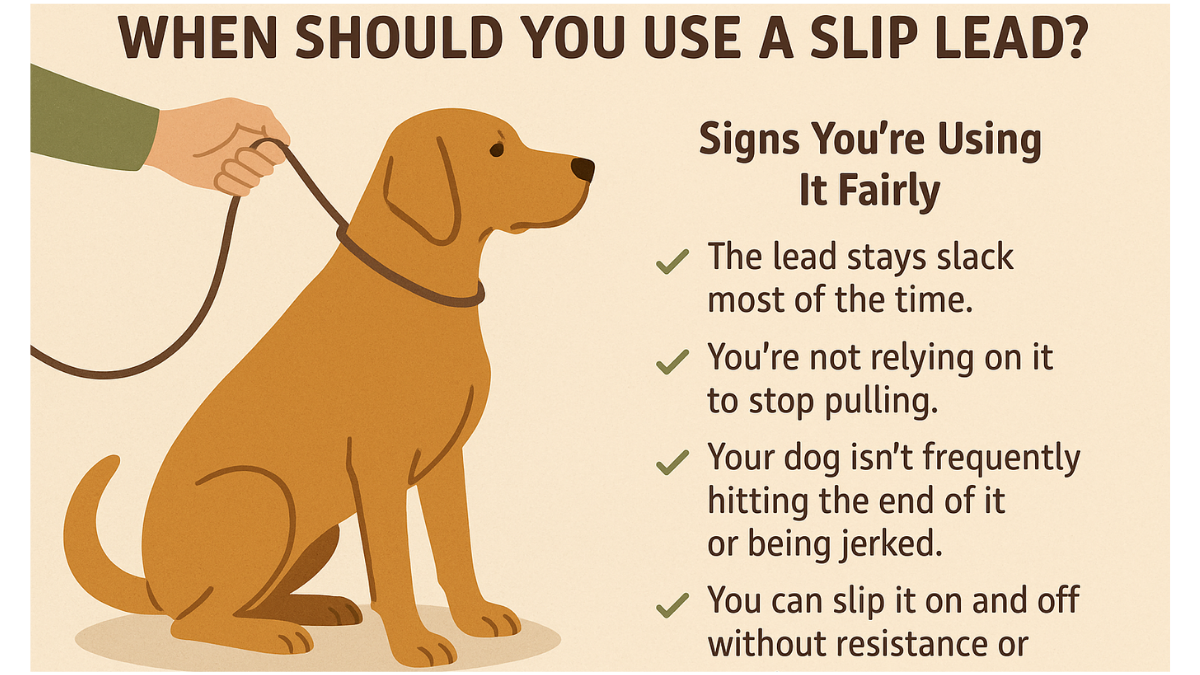When Should You Use a Slip Lead?

Slip leads aren’t training tools—they’re field tools. Used fairly, they’re safe and efficient. It’s all about how you use them, not just what they are
When Should You Use a Slip Lead?
Slip leads can be a divisive topic. For some, they’re a go-to field tool; for others, they’re mistakenly seen as harsh or outdated. The truth? A slip lead is simply a piece of equipment—it’s not cruel in and of itself. Like any tool, it can be used fairly or unfairly, and it’s our responsibility as handlers to understand the difference.
Slip Leads Are Not Training Leads
Let’s be clear: a slip lead is not a training tool. If you’re using one to “correct” pulling or trying to teach loose lead walking, you’re setting your dog (and yourself) up to fail. These leads tighten under pressure, and if used incorrectly during training, can cause discomfort, confusion, or even injury.
For training, particularly for teaching behaviours like loose lead walking or building a positive relationship with cues, you’re far better off with a flat collar or harness, paired with rewards and thoughtful reinforcement.
So When Should You Use a Slip Lead?
Slip leads come into their own in the working dog world—especially in the shooting field or when managing dogs in dynamic, fast-moving environments. Here's when they shine:
-
Quick to put on and off: In the field, time matters. A slip lead can be popped on and off swiftly, which is ideal when moving between drives or from vehicle to working position.
-
Safe containment: For dogs who are steady and understand the job, a slip lead is a simple way to keep them close without fiddling with clips or clasps.
-
Efficiency for multiple dogs: If you're managing several dogs, being able to quickly leash and release makes the day flow more smoothly.
It's About How You Use It
The key to using a slip lead ethically lies in your technique and timing. The lead should be loose when your dog is calm and close. It should not be used to jerk, correct, or restrain a dog that hasn’t yet learned what’s expected.
If a dog is pulling constantly or struggling with the environment, that’s a sign they need more training—not a tighter lead.
Signs You’re Using It Fairly
-
The lead stays slack most of the time.
-
You’re not relying on it to stop pulling.
-
Your dog isn’t frequently hitting the end of it or being jerked.
-
You can slip it on and off without resistance or tension.
Be Honest About Your Dog’s Needs
Working dogs, especially gundogs, often reach the stage where a slip lead is entirely appropriate—but only after they’ve been trained. If your dog still pulls, panics, or lacks steadiness, a different approach is needed first.
At Connected Canines, we always say: Work with the dog you have in front of you. A slip lead isn’t a magic fix—it’s a tool for when the training has already been done.
Conclusion
Used fairly, a slip lead is a practical, efficient tool in the field—not a method of control or correction. It’s not about the equipment itself, but the handler behind it. Equip yourself with knowledge, train with compassion, and you’ll know when (and when not) to reach for that slip lead.
Categories: : collars
 Sue Watkins
Sue Watkins 